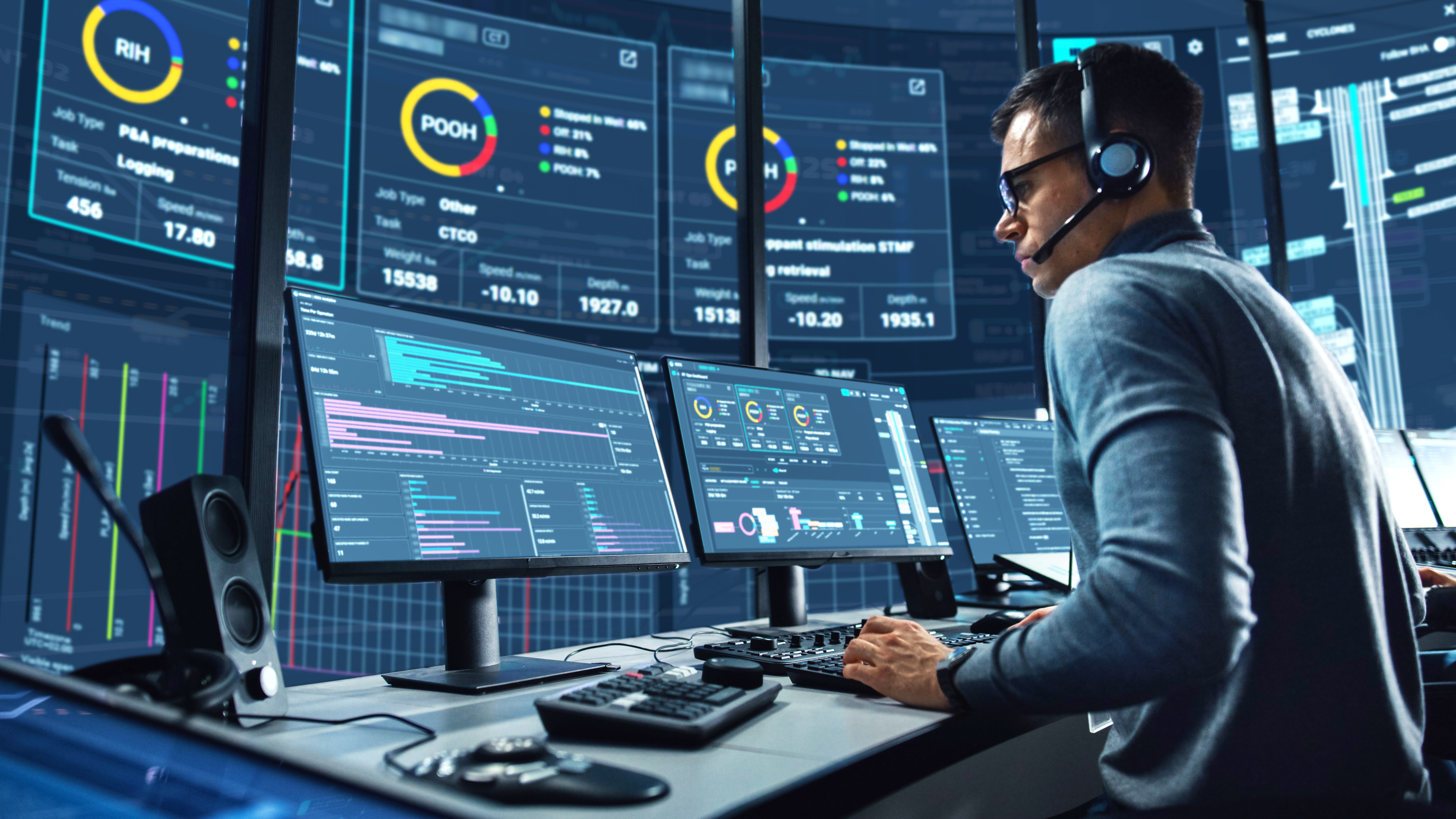Levels of Automation in Coiled Tubing & Wireline Operations
Full autonomy is considered the “holy grail” for most industries, including well construction and intervention operations offshore. Coiled tubing and...
4 min read
Jean-Philippe Huchon Nov 15, 2023 8:37:00 AM

In today's world, where environmental concerns are taking center stage, the offshore drilling industry finds itself at a crossroads. The need to reduce emissions from drilling operations has never been more pressing, but we all know the saying of turning a super-tanker on a dime. It is an industry that is highly innovative, but also established itself in a different era, with vastly different consideration than today.
It is an industry with a complex supply-chain, involving many companies and individuals. This makes adoption of radically new approaches and considerations challenging in the short-term. However, it has all the expertise and resources to evolve, and with newer technological innovations, it also has the incentives necessary.
In this article, we will explore different methods to reduce emissions in offshore drilling operations, particularly the shift from conventional power sources to electrification & automation of equipment. Let's dive in!
Before we discuss electrification & automation, it's crucial to understand what creates emissions in drilling operations and what can be electrified. We're not talking about electrifying entire platforms but focusing in on specific operations using temporary equipment that move from rig to rig, like well intervention.
Three major causes of emissions on a platform or rig:
Equipment Generators: Many pieces of equipment on offshore rigs rely on diesel generators. Due to ease of use and missing infrastructure for centralized electric power on board, it has always been easier for service companies and the rigs operator to let temporary equipment be powered by their generator.
Human Presence: Offshore drilling platforms often house a significant number of personnel, ranging from 100 to 250 individuals. The logistics of transporting, feeding, heating, and ventilating these people add to emissions.
Inefficient Planning: Planning for drilling operations often involves personnel arriving several days before the actual operation, resulting in unnecessary emissions.
These main factors are underpinned by some systemic challenges. Starting with generators for equipment. Little known to those outside the industry, the fuel required for equipment generators have traditionally been “on the house”. With the fuel being free, there have been no incentive to reduce your consumption or adopt alternative solutions.
The impact of human presence should also not be underestimated. It has not been uncommon that the fees and commissions have been based on the number of people on the rig. These commercial models are in direct opposition to the ambitions of emission-reduction and is traced back to how contracts and deals were initially formulated, in another century.
In short, there has not been neither moral nor economic incentives to challenge the status quo, until recently. Inefficiencies that are outlined in this article has been mostly inconsequential.
Read more: How to Test Digital Solutions for Drilling and Well Operations
Now, why should the offshore drilling industry change its approach and implement electrification & automation? The short answer from an economic standpoint is efficiency. Let’s elaborate:
Lower Emissions: Electrification & Automation significantly reduces emissions, aligning with the industry's growing commitment to sustainability. In the case of well operations, lower emissions translate directly to a more efficient operation, and a lower OPEX.
Long-Term Sustainability: Embracing electrification prepares the industry for long-term changes and evolving environmental regulations. The world is dependent on fossil fuels and will be for the coming decades. But it must adapt to our times.
Looking to the future, when greener alternatives take the place of fossil fuels, there will still be projects of industrial scale at sea. Today’s Operators and oil companies hold most of the expertise, equipment and resources required for such ventures and must adapt for tomorrow’s market.
Economic Benefits: Contractual changes are pushing operators to consider emissions, and addressing this aspect not only fulfills moral responsibilities, but also offers a competitive edge. You are ready for any regulatory actions, like fees and taxes based on emissions. Furthermore, lowering emissions will, with the right solutions on-hand, translate directly to a more efficient operation.
The importance of electrification & automation in offshore drilling cannot be overstated. It is a fundamental shift that addresses not only environmental concerns but also economic and operational considerations. Electrification offers the promise of lower emissions, long-term sustainability, and economic benefits for operators.
Read more: Levels of Automation in Coiled Tubing & Wireline Operations
To achieve electrification and automation in the best possible way, it must be considered on multiple levels:
Developing Solutions: The industry should invest in solutions and technologies that enable electrification from the ground up. This includes making electric motors the new standard for operations, as they allow for a higher precision. It also facilitates for computer-controlled automation, which are consistently more efficient.
Reducing Human Presence: Implement strategies for having fewer people on board, such as improved planning and remote operations.
Commercial Models: Challenge existing commercial models that incentivize having more personnel on the rig and using more diesel.
Contractual Framework: Contracts should be structured to create incentives for emissions reduction. This has been difficult to achieve due to a lack of viable solutions the commercial market, is something we are starting to see emerging today.
Digitalization plays a pivotal role in offshore drilling operations. When you want to electrify certain operations on an industrial scale, you must have digital technologies monitoring, controlling, and tying it all together. This becomes a positive spiral, where every operation provides valuable data for further optimization of the next.
Utilizing data and automation optimizes machine operation. It is also a vital component when transitioning from electro-hydraulic systems to electromotor-driven equipment.
Equipment that needed specialized expertise, and were therefore installed and dismounted at need, can now be permanently installed on the rig. This not only reduces the amount of people on-site, but also the time and resources spent on rigging.
Any of the more intangible aspects of an operations, like planning, supervision, and post-job reporting, will see a major overhaul. Collaborative software solutions are upgrading both accuracy and granularity of this. With a system that learns from every operation, and all subject matter experts and decision makers can contribute, realistic data-driven expectations can reduce risk and operational expenditure.
We are happy to see that the leading actors in the oil and gas industry are placing reduction of emissions on top of their agenda and mission plan, but we know they can’t do it alone. Only with access to viable solutions and technologies, is it possible to commit.
Electrification & automation is not just a moral obligation but also strategic. Lowering emissions, by electrifying equipment, reducing personnel and their associated costs, and embracing digital solutions for optimizing and automating every step of the process, equals a more efficient operation and should be celebrated.
As HSE in the offshore industry got the attention it needed 15 years ago, emissions and production efficiency are today in the same situation. However, it will not take 15 years. The needs have been mapped out, the means are well under development and accessible to operators. The incentives and solutions are finally here!
By embracing this change, the industry can reduce emissions, become more economically competitive, and secure its future in a world where emissions are a top priority. With the right strategies and commitment, electrification can reshape the offshore industry, while sustainably prepare it for its evolution this century.

Full autonomy is considered the “holy grail” for most industries, including well construction and intervention operations offshore. Coiled tubing and...

Data collection from sensors on down-hole and surface-based equipment is widely used in most oil and gas operations. Wireline or coiled tubing...

The lifetime of a well is dependent on where you are in the world – from up to 50 years in Saudi Arabia to 10 years in the North Sea. To secure the...